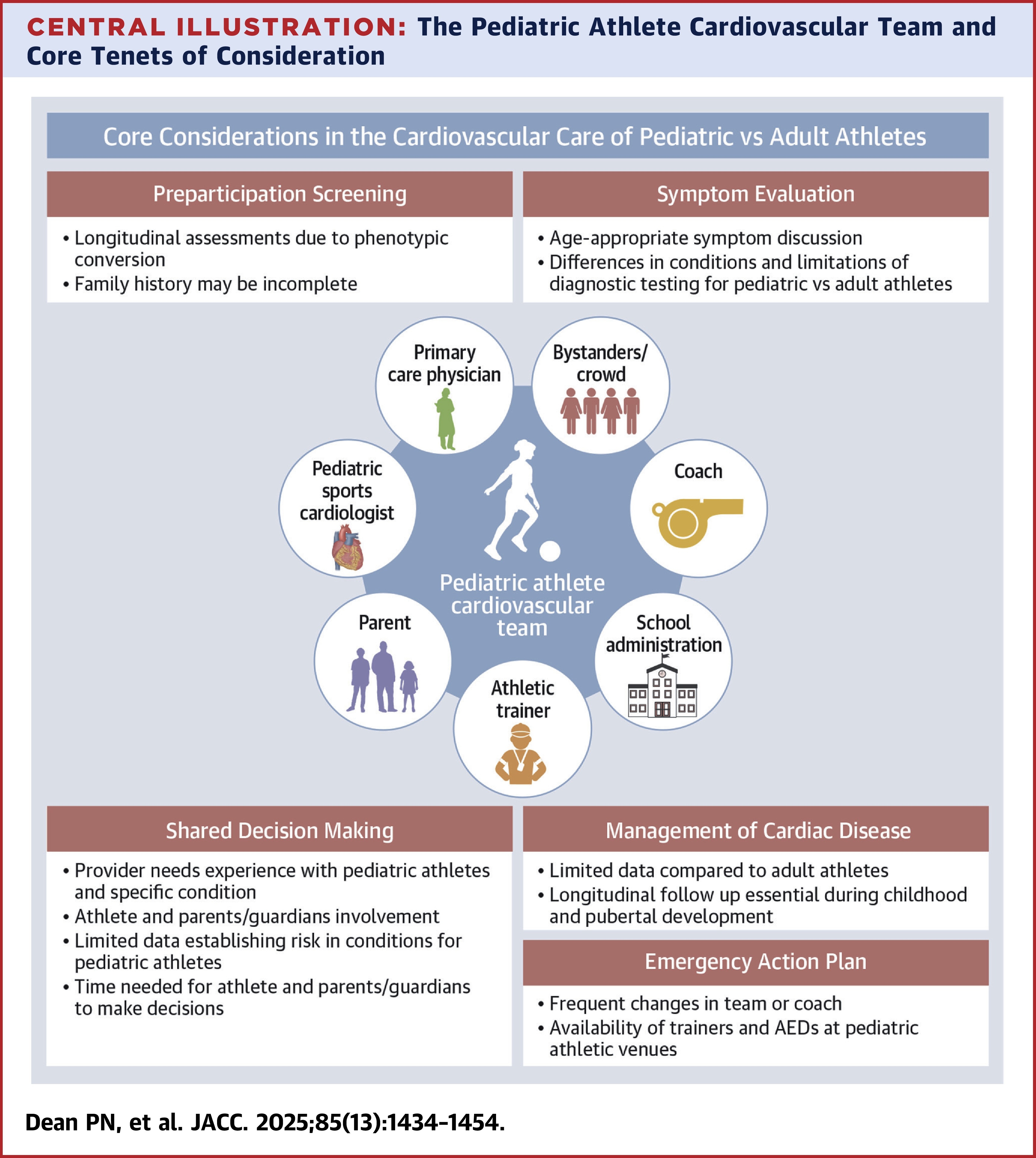JACC State-of-the-Art Review Provides Guide For Managing Pediatric Athletes
A state-of-the-art review published in JACC aims to serve as a primary reference for clinicians providing cardiovascular care to pediatric athletes, defined as individuals aged 5 to 17 years who participate in physical activity with an emphasis on achievement, performance or competitive goals.
The review, authored by Peter N. Dean, MD, FACC, et al., along with ACC's Sports and Exercise Cardiology Council, provides a focused look at not just the definition of a pediatric athlete, but core tenets for consideration related to the cardiovascular care pediatric athletes vs. adult athletes. It also highlights the various constituencies that make up the "Pediatric Cardiovascular Team," including the athletes themselves, primary care physicians, pediatric sports cardiologists, parents or guardians, coaches, school administrations, athletic trainers and bystanders.

Preparticipation screening is among the core tenets identified in the review, with a table that lists seven essential aspects of preparticipation cardiac screening and the clinical evaluation of symptoms in pediatric athletes. Symptom evaluation is also highlighted, with the review authors stressing the importance of age-appropriate symptom discussions and the need for clinicians to both understand and convey the differences in conditions and limitations of diagnostic testing for pediatric vs. adult athletes.
Other core considerations include the management of cardiac disease, which is often challenging in pediatric athletes given limited data compared with adult athletes. As such, longitudinal follow-up in pediatric athletes starting in childhood and going through adolescence and adulthood is essential for effective management. Shared decision-making is also fundamental, keeping in mind the importance of providers having experience with pediatric athletes and specific conditions. Unlike adult patients, parents and guardians need to be involved in these decisions with the athletes and time is needed to make these decisions.
The review also emphasizes the role of advocacy and the need to pay attention to "disparities and corollary health care inequities." Effective strategies to remove barriers to CPR education, AED access and the development of Emergency Action Plans (EAPs) are key, especially when it comes to preventing and treating sudden cardiac arrest. "Only when we align research outputs with advocacy efforts to raise awareness and inform policy will we magnify the current impact," the authors write. "It is critical that pediatricians, sports medicine providers, pediatric cardiologists, and adult sports cardiologists work collectively to understand the clinical pediatric issues and uncertainties that require referral and/or appropriate levels of clinical care."
Clinical Topics: Arrhythmias and Clinical EP, Congenital Heart Disease and Pediatric Cardiology, Sports and Exercise Cardiology, SCD/Ventricular Arrhythmias, CHD and Pediatrics and Arrhythmias, Sports and Exercise and Congenital Heart Disease and Pediatric Cardiology
Keywords: Sports Medicine, Death, Sudden, Cardiac, Adolescent, Athletes
< Back to Listings
